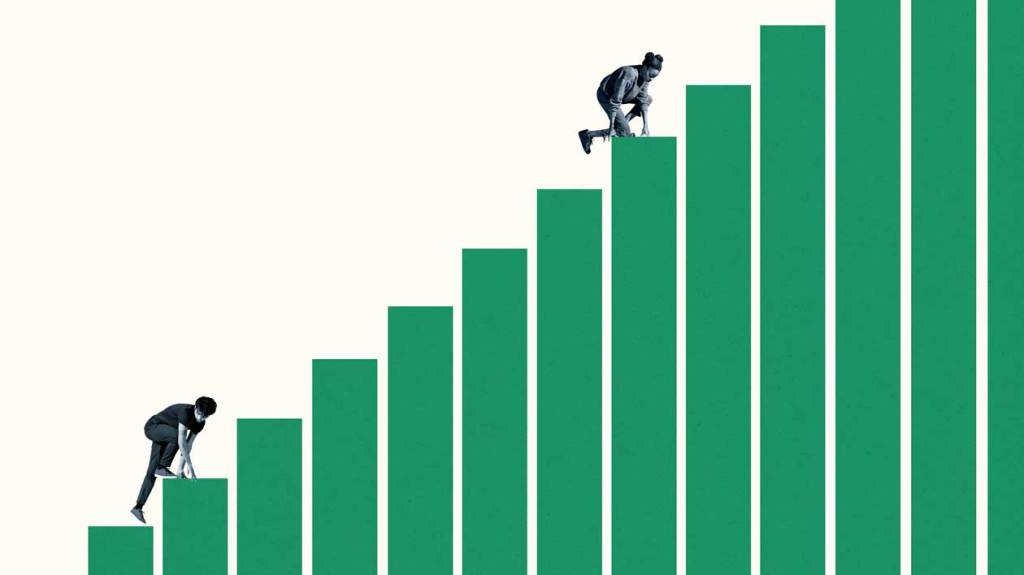What is the best way to become a superstar? First, become a successful mainstream artist.
That's one of the key points of music data company Chartmetric's inaugural annual report.
Of the approximately 710,000 new artists added to Chartmetric's platform in 2023, who were placed in one of six career stages — ranging from “undiscovered” to “legendary,” only a tiny fraction of the percentage finished the year among the top 35,000 artists. Instead, most new artists – 87.6% of them – fell into the “undiscovered” category, while 12.3% of them made it to “developing”, one category higher.
The upper echelons were incredibly difficult for young artists. Just 0.05% of new artists – about 355 – finished in the mid-level category or higher – meaning they ranked in the top 35,000 on the platform. Chartmetric created its proprietary Career Stages categories by considering artists' performance across streaming services, social media platforms and radio airplay.
But wait, the numbers are even more impressive! There were actually 1.3 million new artists added to Chartmetric in 2023, but only 710,000 of them were actually assigned a career stage. Chartmetric said Advertising sign It does not assign each artist a career stage to limit duplicates, remove non-artist profiles and filter out artists with limited data.
Chartmetric's statistics throw cold water on the notion that social media and do-it-yourself distribution can help any artist reach levels of success previously only achieved by label artists. These rare cases grab headlines and fuel the narrative that technology has eroded the powers of traditional gatekeepers and democratized access to the public. And while it's true that artists like Armani White and Jxdn have led TikTok's fame to major label record deals, these success stories are extreme. Anonymity, or something close to it, is the norm.
However, economic mobility is far from impossible. Because Chartmetric tracks so many artists, even incredibly low odds of success can result in a significant number of artists moving up the ranks. The 355 new artists who broke into or surpassed the mid-tier level is a large enough number of innovative new artists to feed a system of record labels and artist services companies that must constantly seek new candidates to become future stars.
However, the hard math behind success in music makes sense. Being heard is difficult when audiences live under a constant deluge of listening options. An enormous amount of music is released every day — more than 110,000 on average every day in 2023, according to Luminate. Chartmetric added 17.2 million new tracks to its database in 2023 — 7.7 million were released last year — and has 103.9 million tracks in its system.
To assess career progression, Chartmetric took a sample of artists who had reached a career stage on June 11. The vast majority of artists belonged to the undiscovered category. In fact, unknown artists made up all but 150,000 of the approximately 1.5 million artists who had been given any career category as of June 11.
Instead of making huge leaps across the stages of their careers, most artists who break out into superstar status come from the mainstream, not the mid-tier or emerging categories. More than half — 54.2% — of mid-level artists (No. 12,000 to No. 35,000) moved up to the majors (No. 1,500 to No. 12,000), the strongest correlation between two career stages, Chartmetric says.
In other words, reaching the top level usually means you've already had significant success. This is likely to be the result of “a steady, consistent rise to the top,” according to Chartmetric's views, rather than overnight fame.
This path to success makes sense given the advantageous starting point of most great artists. Rare is the artist who rose from obscurity to become a chart-topping hit from scratch. In most cases, artists build a career independently and prove themselves—whether through TikTok success or ticket sales—before signing with a record label. The bidding war is coming after, not before, an artist finds an audience. Undiscovered artists are much riskier propositions for labels than mid-level artists.
Exists some economic mobility for less successful careers — but not by much. About 12% of developing artists were able to rise to the mid-level level (No. 12,000 to No. 35,000). Far fewer made it to the upper echelons: Just 0.25% of emerging artists rose to mid-level and reached mainstream (No. 1,500 to No. 12,000) or superstardom (top 1,500).
Just as economic mobility characterizes the “American Dream,” the idea that a person can strive to achieve a better life, the great hope of the modern music business is that artists can make a living off of streaming rights. Whether the system is fair is up for debate. Spotify, Deezer and SoundCloud changed their royalty calculations to favor professional and developing artists over non-developing artists and non-musical content. In the European Union, lawmakers are pushing music streaming services to improve payments to artists.
Chartmetric's report doesn't dispel any notion that the odds are stacked against young artists hoping to break into the mainstream. Success is possible, but rare.



